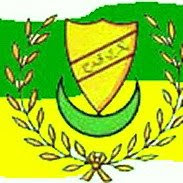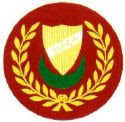Friday, October 17, 2008
Posted by P@@n-sp at 9:09 AM 0 comments
ANGKASAWAN NEGARA
 Datuk Dr. Sheikh Muszaphar Shukor (born Sheikh Muszaphar Shukor Al Masrie bin Sheikh Mustapha on July 27, 1972) is a Malaysian orthopaedic surgeon and is the first Malaysian to go into space. He was launched to the International Space Station aboard Soyuz TMA-11 with the Expedition 16 crew on October 10, 2007.Sheikh Muszaphar flew under an agreement with Russia through the Angkasawan program, and returned to Earth on October 21, 2007, aboard Soyuz TMA-10 with the Expedition 15 crew members, Fyodor Yurchikhin and Oleg Kotov,
Datuk Dr. Sheikh Muszaphar Shukor (born Sheikh Muszaphar Shukor Al Masrie bin Sheikh Mustapha on July 27, 1972) is a Malaysian orthopaedic surgeon and is the first Malaysian to go into space. He was launched to the International Space Station aboard Soyuz TMA-11 with the Expedition 16 crew on October 10, 2007.Sheikh Muszaphar flew under an agreement with Russia through the Angkasawan program, and returned to Earth on October 21, 2007, aboard Soyuz TMA-10 with the Expedition 15 crew members, Fyodor Yurchikhin and Oleg Kotov,

Sheikh Muszaphar is an orthopedic surgeon, and a university medical officer in medicine at the Universiti Kebangsaan Malaysia.In 1998, Sheikh Muszaphar worked at Hospital Seremban, followed by a move to Kuala Lumpur General Hospital in 1999, and was on staff at Hospital Selayang from 2000 through 2001. Sheikh Muszaphar is also a part-time model.tation.Sheikh
During a NASA news conference with the Expedition 16 crew on July 23, 2007, and news conferences following his selection, Sheikh Muszaphar said he hoped to be able to take various live cell cultures to study during his flight.
 Terminology
TerminologySpeaking to Malaysian media outlets, Alexander Karchava, the Russian ambassador to Malaysia, stated that Sheikh Muszaphar is a "fully-fledged cosmonaut".In an interview with the Malaysian Star newspaper, Robert Gibson, a retired NASA astronaut, shared his opinion that Sheikh Muszaphar is fully qualified as an astronaut, and as such, he should be called one. Gibson also said he regarded Sheikh Muszaphar as a peer.
Posted by P@@n-sp at 8:36 AM 0 comments
ASTRONAUT
astronaut
An astronaut or cosmonaut is a person trained by a human spaceflight program to command, pilot, or serve as a crew member of a spacecraft.
While generally reserved for professional space travelers, the term is sometimes applied to anyone who travels into space, including scientists, politicians, journalists, and tourists
Posted by P@@n-sp at 8:28 AM 0 comments
DEFINITION
Until 2003, astronauts were sponsored and trained exclusively by governments, either by the military, or by civilian space agencies. However, with the first sub-orbital flight of the privately-funded SpaceShipOne in 2004, a new category of astronaut was created: the commercial astronaut. With the rise of space tourism, NASA and the Russian Federal Space Agency agreed to use the term "spaceflight participant" to distinguish those space travelers from astronauts on missions coordinated by those two agencies.
The criteria for what constitutes human spaceflight vary. The Fédération Aéronautique Internationale (FAI) Sporting Code for astronautics recognizes only flights that exceed an altitude of 100 kilometers (62 mi).However, in the United States, professional, military, and commercial astronauts who travel above an altitude of 80 kilometers (50 mi)[citation needed] are awarded astronaut wings.
As of May 31, 2008, a total of 482 humans from 39 countrieshave reached 100 km or more in altitude, of which 479 reached Low Earth orbit or beyond.Of these, 24 people have traveled beyond Low Earth orbit, to either lunar or trans-lunar orbit or to the surface of the moon; three of the 24 did so twice (Lovell, Young and Cernan).Under the U. S. definition, 488 people qualify as having reached space. Space travelers have spent over 30,400 person-days (or a cumulative total of over 83 years) in space, including over 100 astronaut-days of spacewalks. As of 2008, the man with the longest time in space is Sergei K. Krikalev, who has spent 803 days, 9 hours and 39 minutes, or 2.2 years, in space.Peggy A. Whitson holds the record for most time in space by a woman, 377 days.
Terminology
See also: Astronaut ranks and positions
In the United States and many other English-speaking nations, a professional space traveler is called an astronaut. The term derives from the Greek words ástron (άστρον), meaning "star", and nautes (ναύτης), meaning "sailor". The first known use of the term "astronaut" in the modern sense was by Neil R. Jones in his short story The Death's Head Meteor in 1930. The word itself had been known earlier. For example, in Percy Greg's 1880 book Across the Zodiac, "astronaut" referred to a spacecraft. In Les Navigateurs de l'Infini (1925) of J.-H. Rosny aîné, the word astronautique (astronautic) was used. The word may have been inspired by "aeronaut", an older term for an air traveler first applied (in 1784) to balloonists.
NASA applies the term astronaut to any crew member aboard NASA spacecraft bound for Earth orbit or beyond. NASA also uses the term as a title for those selected to join its Astronaut Corps.
Posted by P@@n-sp at 8:24 AM 0 comments
definition about astronaut
DEFINITION
[edit] Terminology
See also: Astronaut ranks and positions
In the United States and many other English-speaking nations, a professional space traveler is called an astronaut. The term derives from the Greek words ástron (άστρον), meaning "star", and nautes (ναύτης), meaning "sailor". The first known use of the term "astronaut" in the modern sense was by Neil R. Jones in his short story The Death's Head Meteor in 1930. The word itself had been known earlier. For example, in Percy Greg's 1880 book Across the Zodiac, "astronaut" referred to a spacecraft. In Les Navigateurs de l'Infini (1925) of J.-H. Rosny aîné, the word astronautique (astronautic) was used. The word may have been inspired by "aeronaut", an older term for an air traveler first applied (in 1784) to balloonists.
NASA applies the term astronaut to any crew member aboard NASA spacecraft bound for Earth orbit or beyond. NASA also uses the term as a title for those selected to join its Astronaut Corps.[13]
Until 2003, astronauts were sponsored and trained exclusively by governments, either by the military, or by civilian space agencies. However, with the first sub-orbital flight of the privately-funded SpaceShipOne in 2004, a new category of astronaut was created: the commercial astronaut. With the rise of space tourism, NASA and the Russian Federal Space Agency agreed to use the term "spaceflight participant" to distinguish those space travelers from astronauts on missions coordinated by those two agencies.
The criteria for what constitutes human spaceflight vary. The Fédération Aéronautique Internationale (FAI) Sporting Code for astronautics recognizes only flights that exceed an altitude of 100 kilometers (62 mi). However, in the United States, professional, military, and commercial astronauts who travel above an altitude of 80 kilometers (50 mi)[citation needed] are awarded astronaut wings.
As of May 31, 2008, a total of 482 humans from countrieshave reached 100 km or more in altitude, of which 479 reached Low Earth orbit or beyond.Of these, 24 people have traveled beyond Low Earth orbit, to either lunar or trans-lunar orbit or to the surface of the moon; three of the 24 did so twice (Lovell, Young and Cernan). Under the U. S. definition, 488 people qualify as having reached space. Space travelers have spent over 30,400 person-days (or a cumulative total of over 83 years) in space, including over 100 astronaut-days of spacewalks. As of 2008, the man with the longest time in space is Sergei K. Krikalev, who has spent 803 days, 9 hours and 39 minutes, or 2.2 years, in space. Peggy A. Whitson holds the record for most time in space by a woman, 377 days.
TERMINOLOGY
See also: Astronaut ranks and positions
In the United States and many other English-speaking nations, a professional space traveler is called an astronaut. The term derives from the Greek words ástron (άστρον), meaning "star", and nautes (ναύτης), meaning "sailor". The first known use of the term "astronaut" in the modern sense was by Neil R. Jones in his short story The Death's Head Meteor in 1930. The word itself had been known earlier. For example, in Percy Greg's 1880 book Across the Zodiac, "astronaut" referred to a spacecraft. In Les Navigateurs de l'Infini (1925) of J.-H. Rosny aîné, the word astronautique (astronautic) was used. The word may have been inspired by "aeronaut", an older term for an air traveler first applied (in 1784) to balloonists.
NASA applies the term astronaut to any crew member aboard NASA spacecraft bound for Earth orbit or beyond. NASA also uses the term as a title for those selected to join its Astronaut Corps.
Posted by P@@n-sp at 8:16 AM 0 comments
Monday, October 13, 2008
PlayStation3(hardware and accessories)
 The PlayStation 3 is convex on its left side when vertical (the top side is convex when horizontal), and has a glossy black finish with the Playstation logo on the left side. Playstation designer Teiyu Goto stated that the Spider-Man font-inspired logo "was one of the first elements [SCEI president Ken Kutaragi] decided on and the logo may have been the motivating force behind the shape of PS3."
The PlayStation 3 is convex on its left side when vertical (the top side is convex when horizontal), and has a glossy black finish with the Playstation logo on the left side. Playstation designer Teiyu Goto stated that the Spider-Man font-inspired logo "was one of the first elements [SCEI president Ken Kutaragi] decided on and the logo may have been the motivating force behind the shape of PS3."
The PlayStation 3 features a slot-loading 2x speed Blu-ray Disc drive for games, Blu-ray movies, DVDs, CDs, and other optical media.It was originally available with hard drives of 20 and 60 GB(only the 60 GB model was available in PAL regions).An 80 GB model has since been introduced in NTSC regions, and a 40 GB model has been introduced in all regions.All PS3 models have user-upgradeable 2.5" SATA hard drives.The PlayStation 3 uses the IBM-designed Cell microprocessor as its CPU, utilizing seven of the eight "synergistic processing elements" (often shortened to SPE). The eighth SPE is disabled to improve chip yields (i.e. chips do not have to be discarded if one of the SPEs is defective.) Only six of the seven SPEs are accessible to developers as one is reserved by the OS. Graphics processing is handled by the NVIDIA RSX 'Reality Synthesizer', which can output resolutions from 480i/576i SD up to 1080p HD.The PlayStation 3 has 256 MB of XDR main memory and 256 MB of GDDR3 video memory for the RSX.
The system has Bluetooth 2.0, gigabit Ethernet, USB 2.0 and HDMI 1.3a built in on all currently shipping models.Wi-Fi networking is also built-in on the 40, 60 and 80 GB models while a flash card reader (compatible with Memory Stick, SD/MMC, and CompactFlash/Microdrive media) is built-in on 60 GB and current 80 GB models.
The PS3's hardware has also been used to build supercomputers for high-performance computing. Terra Soft Solutions has a version of Yellow Dog Linux for the PlayStation 3,and sells PS3s with Linux pre-installed,in single units, and 6 and 32 node clusters.n addition, RapidMind is pushing their stream programming package for the PS3. Also, on January 3, 2007, Dr. Frank Mueller, Associate Professor of Computer Science at NCSU, clustered 8 PS3s. Mueller commented that the 512 MB of system RAM is a limitation for this particular application, and is considering attempting to retrofit more RAM. Software includes: Fedora Core 5 Linux ppc64, MPICH2, OpenMP v2.5, GNU Compiler Collection and CellSDK 1.1.
On March 22, 2007, SCE and Stanford University released the Folding@Home project for the PlayStation 3.This program allows PS3 owners to lend the computing power of their consoles to help study the physical process of protein folding.
Accessories
Numerous accessories for the console have been developed including the wireless Sixaxis and DualShock 3 controllers, the BD Remote, the PlayStation Eye camera and the upcoming PlayTV DVB-T tuner/digital video recorder accessory.
At its press conference at the 2007 Tokyo Game Show, Sony announced the DualShock 3 (trademarked DUALSHOCK 3), a PlayStation 3 controller with the same function and design as the Sixaxis, but with vibration capability included.[Hands-on accounts describe the controller as being noticeably heavier than the standard Sixaxis controller, and capable of vibration forces comparable to the DualShock 2.It was released in Japan on November 11, 2007, in North America on April 15, 2008,in Australia on April 24, 2008, in New Zealand on May 9, 2008, in Europe on July 2, 2008,and in the United Kingdom and Ireland on July 4, 2008.
Posted by P@@n-sp at 10:12 AM 0 comments
















